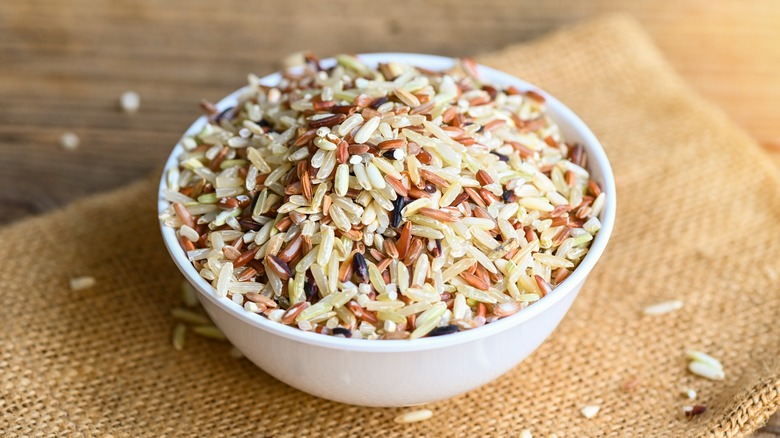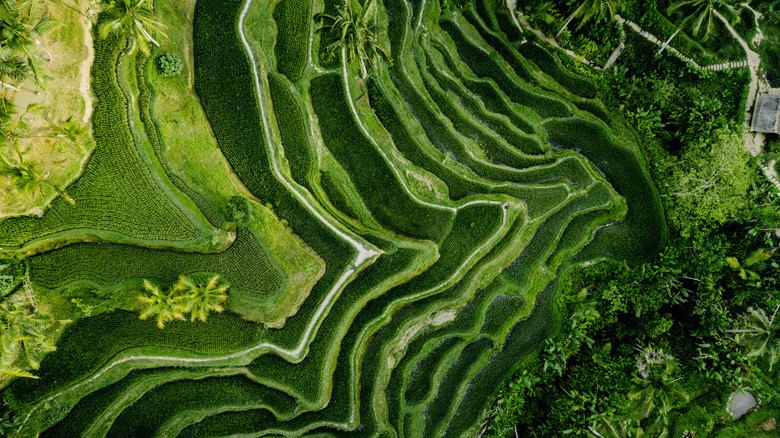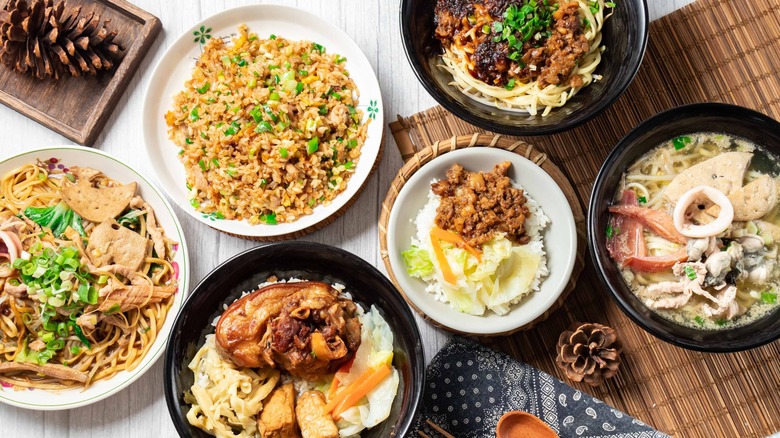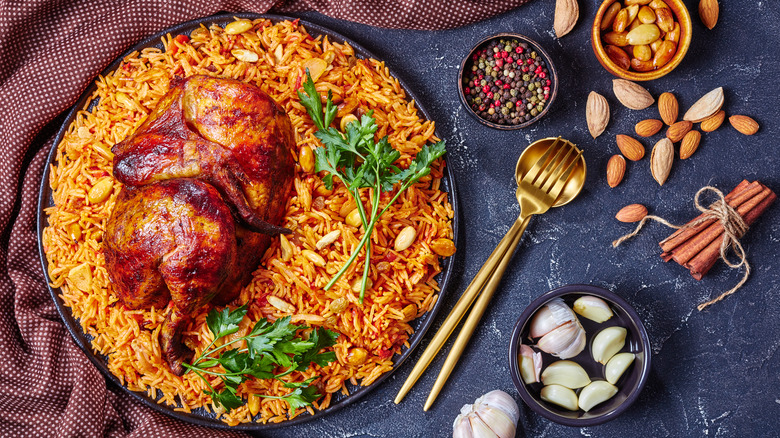Most Of The World's Rice Comes From This Country
What in the world would we do without rice? It's not something we like to think about, as so many of us rely on rice as our main carbohydrate. Whether we eat it with sushi, fried along with our collard greens, shaped into a sweet cake, or boiled into a steaming hot bowl of porridge, something is comforting and nostalgic about rice. Substitute Cooking says that rice is the most commonly eaten food in the world, and it's easy to believe. There are so many recipes out there that rely on rice to push them over the edge. Sure there are countries like Italy that might rely on pasta for their carbs, and other cereal grains like barley, rye, and oats are important sources of nourishment, but none quite so much so as rice. Countries all over the world grow, sell, buy, and eat rice, but as more and more people fill up this small world, demand for the stuff is going up. So, where are we all getting our rice from?
Rice in China
It may come as no surprise to you that Asian countries are the leaders in the rice market. That means that they grow, export, and consume the most rice in the world. According to the U.S. Department of Agriculture, rice is the key food in Asia, Sub-Saharan Africa, and South America. Indica rice makes up 70-72% of the global rice trade, followed by aromatic (jasmine and basmati) rice. In 2021 alone, China grew the most rice, producing 212.84 million metric tons of the grain, followed by the second largest producer, India (via Statista).
Rice is a staple part of Chinese cuisine and is in hundreds if not thousands of traditional dishes including congee (rice porridge), Hainanese Chicken Rice, Pork Fried Rice, and much, much more, so it makes sense that China is the biggest consumer and producer of rice. World Atlas states that China alone eats up to 30% of the world's total rice production and imports quite a bit, on top of growing most of its own stuff. India again comes in second place with their rate of consumption, with Indonesia in third (via Helgi Library).
The history of rice
As far as ancient grains go, rice is one of the heavy hitters. UC Davis has documentation of rice as a food source dating back to 2500 B.C., originating in China and then proceeding to spread through Sri Lanka and India, then further westward to the Mediterranean and eventually to Central and South America. Now, over 90% of the world's rice is grown in Asia on what Britannica calls "submerged land" in tropical, semitropical, and temperate climates, where it relies on a plentiful water source to thrive.
According to Encyclopedia, rice was once called "Dhanya," which means "sustenance for the human race" in the ancient Indian language — a fitting name for a plant that has managed to feed billions of people around the globe for centuries. Through rice is a huge part of Asian culinary traditions, its massive popularity around the world has led the grain to incorporation in many traditional dishes across various cultures, such as hashweh from Palestine, jollof rice from Nigeria, and arroz rojo from Mexico, all of which are imperative to the food landscapes in each nation. Rice also plays a huge part in Chinese, Thai, Indonesian, Sri Lankan, and Malaysian folklore and legends, so much so that in some creation myths, gods and goddesses give rice to humans as a foundational gift of civilization itself (via Earth Storiez).
Rice uses and nutrition
Rice is estimated by World Bank Blogs to feed over 3.5 billion people, providing food security, nutrition, and economic livelihood to a large portion of the world's population. It is incredible to think about how one grain can do so much. The Royal Botanic Gardens calls rice a complex carb, bestowing its consumers with vital fiber, protein, iron, vitamin B, and manganese used by the body to fight off malnutrition. Rice is also used in traditional medicine practices, and can be beneficial for treating stomach conditions. It is good for the skin and hair as well.
Rice comes in all shapes and sizes; some of us prefer our rice starchy and sicky, while others love a long and individual grain texture as a base for their curries and broths. But different kinds of rice also come with different flavors and even different health benefits. According to Healthline, the rice varieties with the most nutrients are brown rice, black rice (such as Indonesian black rice and Thai jasmine black rice), red rice (like Himalayan red rice and Thai red cargo rice), and wild rice varieties, which all pack significantly more vitamins and minerals than plain white rice. Red and black rice also have the additional benefit of containing a high amount of antioxidants, which are overall fantastic for the body.



